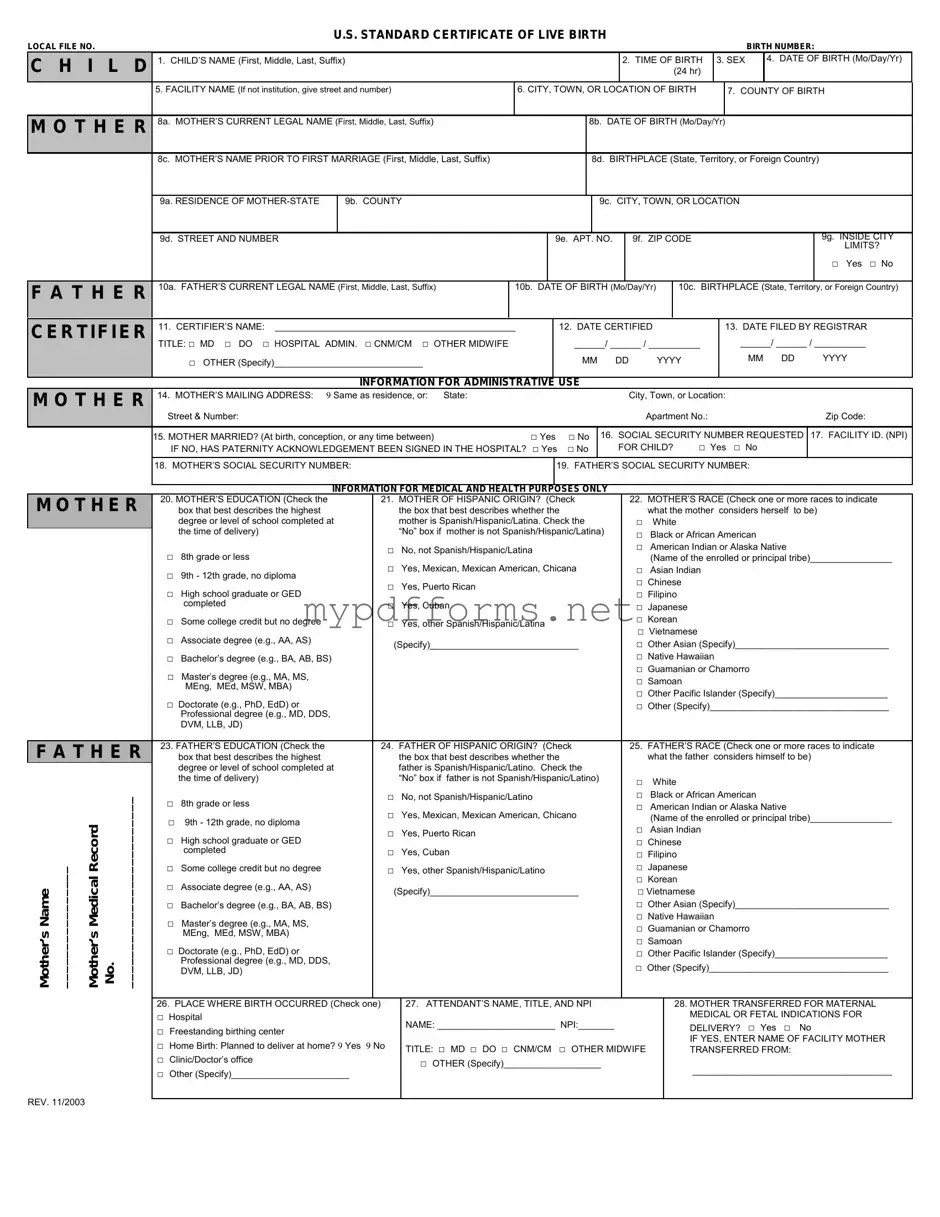The CDC U.S. Standard Certificate of Live Birth form is closely related to the Certificate of Death. Both documents serve as official records of significant life events. While the birth certificate documents the arrival of a new life, the death certificate records the end of life. Each serves as a legal document that may be required for various purposes, such as settling estates or enrolling in school. Both forms include vital information such as names, dates, and places, which are essential for identity verification and record-keeping.
Another document similar to the birth certificate is the Adoption Certificate. This certificate is issued when a child is legally adopted, providing a new legal identity for the child. Like the birth certificate, it includes vital information such as the child's name and the names of the adoptive parents. However, it also indicates the legal transition of guardianship, which is a unique aspect not found in a standard birth certificate. Both documents are crucial for establishing a person's identity and familial relationships.
The Social Security card also shares similarities with the birth certificate. While the birth certificate establishes identity at birth, the Social Security card provides a unique identifier for individuals throughout their lives. Both documents are essential for various administrative processes, such as applying for jobs or government benefits. The Social Security card requires the birth certificate for issuance, linking the two documents in terms of identity verification.
The Passport is another document that is comparable to the birth certificate. A passport serves as an official identification for international travel, while the birth certificate is often required to obtain one. Both documents verify identity and citizenship, playing a crucial role in establishing a person's legal status. They contain personal information, such as full name and date of birth, which helps to ensure that the individual is accurately identified.
The Marriage Certificate is similar to the birth certificate in that it documents a significant life event. This certificate records the union between two individuals and includes vital information such as names, dates, and places. Like the birth certificate, it serves as a legal document that may be required for various purposes, such as applying for joint loans or benefits. Both certificates establish important legal relationships and are used to verify personal status.
The Driver’s License also shares some characteristics with the birth certificate. A driver’s license is an official form of identification that often requires a birth certificate for issuance. Both documents serve to confirm identity and are commonly used in everyday situations, such as traveling or verifying age. They contain personal details that help establish a person's identity in various contexts.
The Voter Registration Card is another document that has similarities with the birth certificate. Both documents are used to establish identity and eligibility for participation in civic duties. A voter registration card requires proof of identity, which often includes a birth certificate. Both documents play a role in ensuring that individuals can exercise their rights and responsibilities as citizens.
The importance of the Illinois Notice to Quit form cannot be underestimated in the realm of landlord-tenant relationships. This formal document serves to notify tenants of the termination of their lease under specific conditions, ensuring clarity in the rental process. Landlords may utilize this form when lease violations occur or when a rental period concludes. To assist those looking to navigate this essential procedure, the Illinois Forms website offers an accessible version of the Notice to Quit, facilitating a smoother transition for both parties involved.
Lastly, the School Enrollment Form can be compared to the birth certificate. When enrolling a child in school, parents typically need to provide a birth certificate as proof of the child's age and identity. Both documents are crucial for ensuring that children receive appropriate educational opportunities. They help schools verify the identity and eligibility of students, which is essential for proper enrollment and record-keeping.
